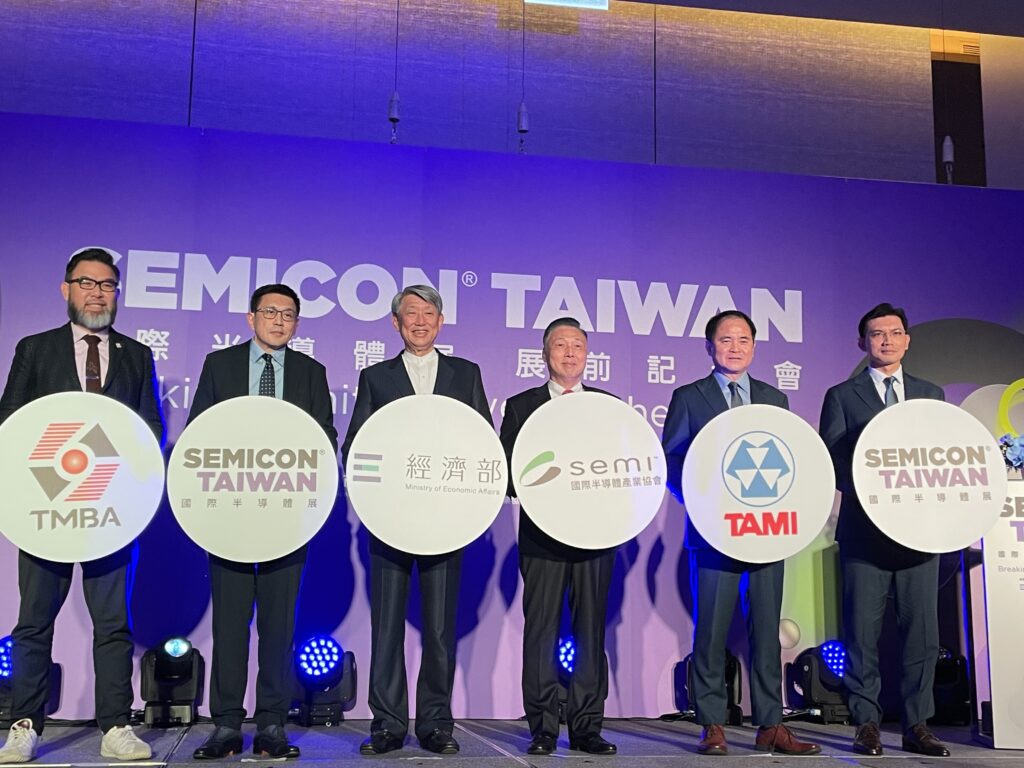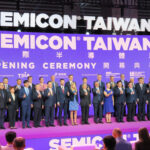ASIA ELECTRONICS INDUSTRYYOUR WINDOW TO SMART MANUFACTURING
Industry to Harness Better IC Growth in AI Era
The semiconductor industry drives Taiwan’s economic spillover. For that reason, industry and government are joining forces at SEMICON Taiwan 2024 in a bid to influence and scale new heights. Moreover, AI will fuel a strong semiconductor recovery, which is likely to grow 24 percent by 2030.
SEMICON Taiwan 2024 will take place from September 4 to 6 at the Nangang Exhibition Center, marking the first time the event is held on such a grand scale.
“Taiwan’s semiconductor industry has become the most critical pillar of the global supply chain. With the advent of the Wafer Manufacturing 2.0, Taiwan has emerged as a global market leader,” said Terry Tsao, Global Chief Marketing Officer and President of SEMI Taiwan during the event’s pre-opening press conference.
This year’s SEMICON Taiwan, themed ‘Breaking Limits: Powering the AI Era,’ delves into technological innovation, cross-industry integration. Furthermore, it will tackle the semiconductor industry’s spillover effects. Scheduled to speak at the CEO Forum are Dr. Jung-Bae Lee, the President and General Manager of Memory Business at Samsung Electronics’ Device Solutions Division, and Justin Kim (Kim, Ju-Seon) President of SK hynix.

AI Chips Propel Strong IC Market Growth
Driven by AI, geopolitical factors, and enhanced supply chain resilience, semiconductor investments, and capacity expansion are set to diversify globally. Therefore, ushering in a new growth phase for the semiconductor market.
Clark Tseng, Senior Director, Market Intelligence, SEMI noted there had been seasonal demand softness and declining consumer purchasing power that led to a slight dip in electronics sales in Q1 2024. Nonetheless, the recovery in the IC market has already reflected in a 79% surge in memory prices and sales in Q1. In fact, Tseng said a robust growth will continue at a 27-29 percent annual growth rate through 2030.
Furthermore, AI-driven demand for high-performance computing (HPC) chips is likely to accelerate the semiconductor industry’s strong recovery. Particularly, AI semiconductor market can achieve a 24 percent CAGR by 2030. This growth will also drive double-digit expansion in the semiconductor equipment market, with the market size likely to exceed $127 billion. Taiwan, China, and South Korea will remain global leaders in equipment spending.
Marks Industry’s Golden Era
Jyh-Huei Kuo, Minister of Economic Affairs stated that the next five years will be pivotal for Taiwan’s semiconductor industry. Most importantly, the government is eager to see the continued expansion of semiconductor spillover effects. Thus, the government will continue to promote various initiatives to build Taiwan’s semiconductor strategy.
In addition to providing preferential taxes, Taiwan chip-based Industrial Innovation Program, will also strengthen the cultivation of semiconductor talents. It will also attract outstanding overseas students to work and study in Taiwan to solve the problem of talent shortage. At the same time, it will also endeavor to implement “Science Park Service Center” in Japan to provide one-stop services for Taiwanese manufacturers and assist all supply chain manufacturers to establish in Japan.
Meanwhile, Tien Wu, CEO of ASE shared insights on how semiconductor technology breakthroughs are creating a golden era for the industry. Particularly, Wu mentioned that AI is becoming a major driver of semiconductor innovation, with the industry at a crucial moment for reshaping the future.
Moreover, the growing demand for software is challenging hardware and technology integration, and the supply chain must address geopolitical realignments. Through diversified R&D integration, the efficiency of chips, packaging, system design, and materials and equipment will have significant enhancement. This is crucial for AI applications. Facing future challenges and opportunities, choosing the right partners and development directions will be key to a company’s success.
03 September 2024


